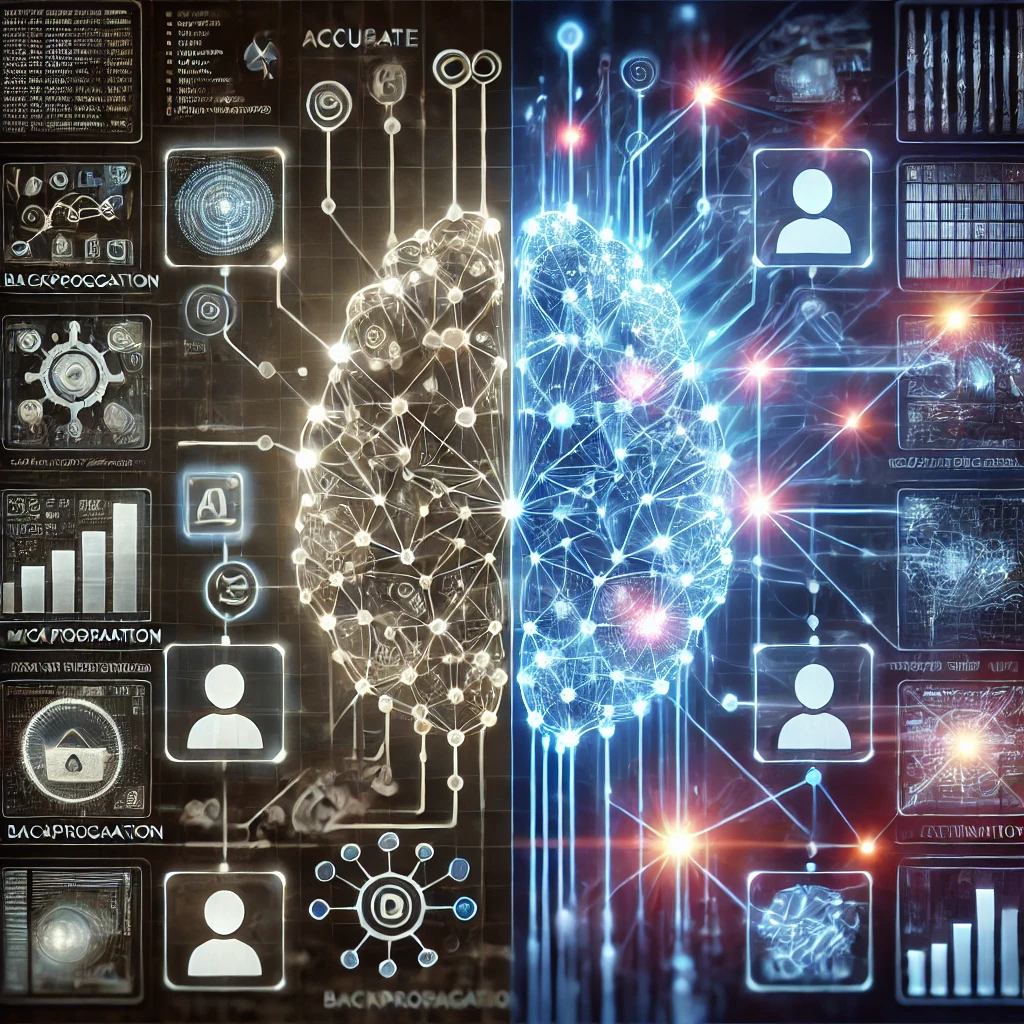Welcome to a world where technology is like a magic trick – amazing, powerful, and sometimes a bit mysterious. This is the world of Black Box AI, a term that might sound like it’s straight out of a sci-fi movie, but is actually a big part of our everyday lives. In this blog post, we’re going to break down what Black Box AI is and how it’s used in various fields. And don’t worry if you’re not a tech whiz – this explanation is meant for everyone, even if you’re still in middle school.
Black Box AI is a kind of artificial intelligence that’s super smart in solving problems and making decisions, but the way it works is not fully understood by humans, not even by the smartest scientists. It’s like having a robot that can figure out really complex puzzles on its own, but it won’t tell you how it did it. We’ll explore how Black Box AI is changing things in healthcare, for developers and data scientists, in computer vision, and in the future of work.
Healthcare
In healthcare, Black Box AI is like a superhero. It can look at tons of medical data – like X-rays and blood tests – and spot illnesses that doctors might miss. This means patients can get diagnosed quicker and start their treatments earlier, which can save lives.
But there’s a catch. Sometimes, Black Box AI in healthcare makes decisions or gives advice, and the doctors don’t fully understand why. It’s like getting a health tip from a mystery voice without knowing the reason behind it. Doctors need to be sure about their decisions, so this lack of clear understanding can be a bit of a problem.
Developers and Data Scientists
For developers and data scientists, working with Black Box AI is a bit like being detectives and magicians at the same time. They create these AI systems, feed them data, and train them to solve complex problems. But sometimes, even they can’t fully explain how the AI came up with a specific solution.
It’s both exciting and challenging for these tech experts. They’re amazed at how smart the AI is, but also scratching their heads trying to figure out its logic. This makes their job really interesting but also means they have to work extra hard to make sure the AI is doing what it’s supposed to do.
Computer Vision
Computer Vision is an area where Black Box AI really shines. It’s all about giving computers and robots the ability to ‘see’ and understand the world, like identifying objects in photos or videos. This is super useful in things like self-driving cars or security cameras.
However, just like with other AI, the mystery remains. Sometimes the way Black Box AI in computer vision makes decisions can be hard to understand. It might recognize something in a picture, but we don’t always know how it figured it out. This can be a bit tricky, especially when these decisions are really important, like in self-driving cars.
Future of Work
The Future of Work is being reshaped by Black Box AI. It’s helping businesses to be more efficient by doing things like predicting market trends or automating routine tasks. This means some jobs are changing, and new types of jobs are being created, especially ones where people work alongside AI.
But it also raises some questions. What happens to the jobs that AI takes over? And how do we make sure that people are ready for these new kinds of jobs? These are big questions that we need to think about as we step into a future where AI plays a huge role in our work lives.
Myths vs. Facts about Black Box AI
Myth: Black Box AI is Always Right
Fact: Black Box AI is super smart, but it’s not perfect. It can make mistakes, especially if the data it learns from isn’t good.
Myth: Black Box AI Understands Human Emotions
Fact: Even though Black Box AI can process lots of information, it doesn’t have feelings or emotions. It’s all about data and patterns for AI.
Myth: Black Box AI Will Replace All Human Jobs
Fact: While Black Box AI will change how some jobs work, it’s not going to replace all human jobs. It’s more about AI and humans working together.
FAQ Section
Q1: What is Black Box AI?
Black Box AI is a type of AI that’s really good at solving problems and making decisions, but the way it does this is not fully understood by humans. It works with a lot of data, finds patterns, and learns from them, but the exact ‘how’ is often a mystery.
Q2: How is Black Box AI used in healthcare?
In healthcare, Black Box AI helps doctors by analyzing medical data like scans and test results. It can spot diseases quickly and accurately, which is great for patient care. But doctors need to be careful and use their own judgment too, since the AI’s reasoning isn’t always clear.
Q3: Why is Black Box AI important for developers and data scientists?
For developers and data scientists, Black Box AI is important because it can solve problems that are too complex for humans. They build and train these AI systems, but they also need to work on understanding and controlling them better, to make sure the AI is reliable and safe.
Q4: What does Black Box AI do in computer vision?
In computer vision, Black Box AI helps computers and robots ‘see’ things like humans do. It’s used in things like facial recognition and self-driving cars. But since we don’t fully understand how it makes all its decisions, there’s a need for caution, especially in critical applications.
Q5: How will Black Box AI change the future of work?
Black Box AI is changing the future of work by automating some tasks and creating new types of jobs. It’s making businesses more efficient, but it’s also important for people to learn new skills, like how to work with AI, to be ready for these changes.
Google Snippets
Snippet on Black Box AI
“Black Box AI refers to advanced AI systems with decision-making processes that are not fully transparent or understood, used in various applications from healthcare to business.”
Snippet on Healthcare AI
“AI in healthcare is revolutionizing patient diagnosis and treatment, offering rapid and accurate data analysis but posing challenges in understanding AI decision-making.”
Snippet on Computer Vision AI
“Computer Vision AI enables machines to interpret visual data, enhancing capabilities in areas like autonomous vehicles and security, with ongoing efforts to understand AI’s decision logic.”
Black Box AI Meaning: From Three Different Sources
Source 1
Black Box AI refers to AI systems where the internal workings are complex and not completely transparent, making their decision-making process a bit of a mystery.
Source 2
In Black Box AI, the logic and processes used by the AI to make decisions are not fully understood by humans, often due to the complex algorithms and large amounts of data involved.
Source 3
Black Box AI is characterized by AI models whose decision-making rationale is not clear, often seen in sophisticated machine learning systems where the exact reasoning is concealed within layers of computations.
Did You Know?
- The term “Black Box” in Black Box AI is similar to the black box in airplanes, which is hard to understand from the outside but holds important information.
- Some Black Box AI systems can create their own methods of problem-solving that are too complex for even their creators to understand.
- There’s an area of study in AI called ‘Explainable AI’ that’s working on making AI’s decision-making processes more transparent and understandable to humans.
Black Box AI is a fascinating part of our modern world, offering both incredible opportunities and challenges. It’s helping us in areas like healthcare and changing the way we work, but it also brings up questions about understanding and trust. As we continue to use and develop Black Box AI, it’s important for us to keep learning about it and thinking about how to use it responsibly.
In the end, Black Box AI shows us both the amazing things technology can do and the importance of human understanding and control. It’s a reminder that as we move forward with AI, we need to work together – humans and machines – to make the most of this incredible technology.
References
- Explainable AI that uses counterfactual paths generated by conditional permutations of features. This method is used to measure feature importance by identifying sequential permutations of features that significantly alter the model’s output. The paper discusses the evaluation strategy of comparing the feature importance scores computed by explainers with the model-intern Gini impurity scores generated by the random forest, which is considered as ground truth in the study.
- Thinkful offers insights on how to address the “black box” problem in AI through Explainable AI (XAI) and transparency models. They discuss techniques like Feature Importance Analysis, Local Interpretable Model-agnostic Explanations (LIME), SHapley Additive exPlanations (SHAP), Model Distillation, and Decision Rules, which are designed to make AI models more interpretable and transparent. This is especially important in applications where decisions can have far-reaching consequences, such as healthcare or finance








